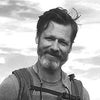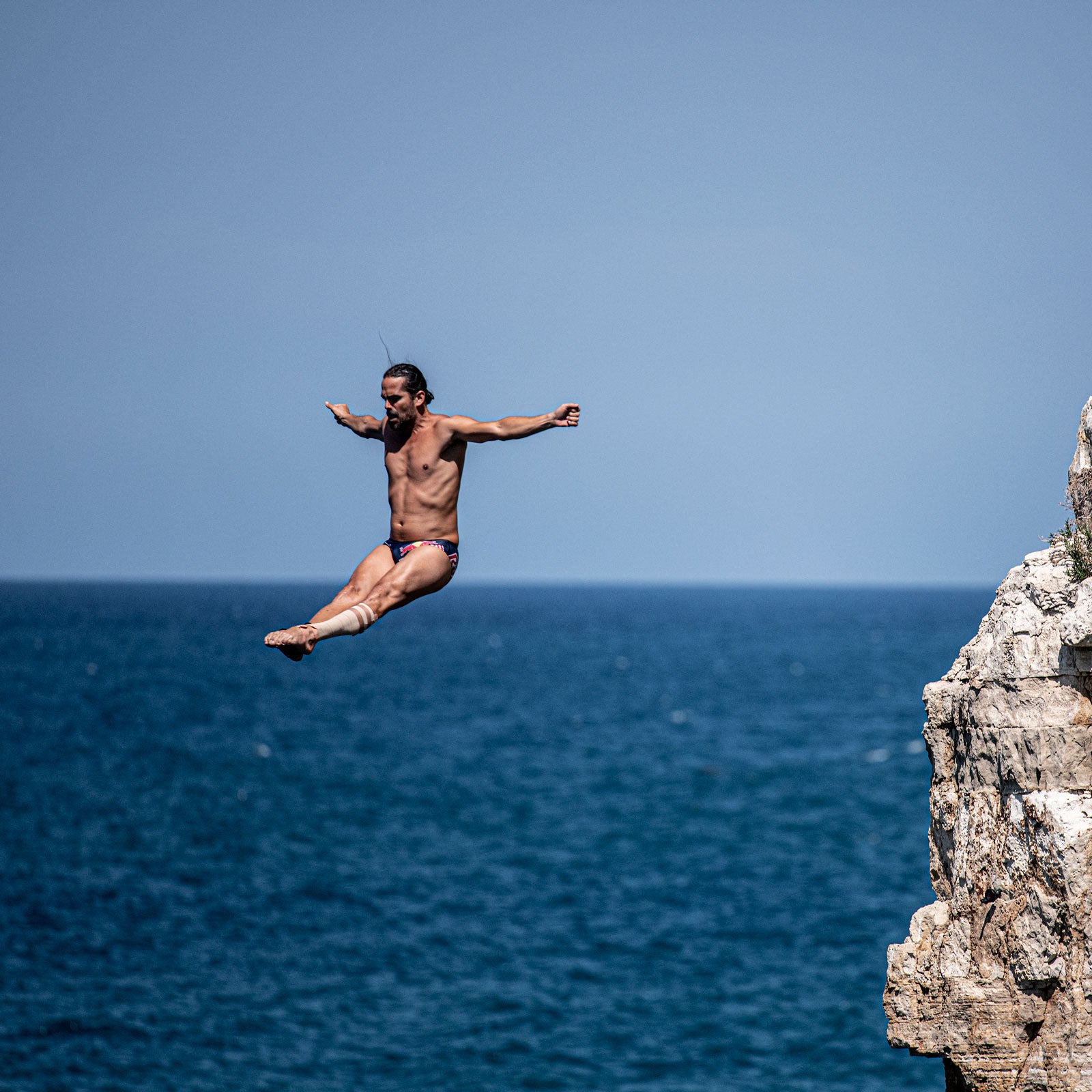has a strange job. As one of the most successful cliff divers in history, the 44-year-old Colombian gets paid to travel around the world and dive off precipices up to��88 feet��high. After spending the past two decades competing in professional events, including the , he’s become the face of the sport, racking up 13 world titles and two , one of which he earned for scoring a perfect dive. But even after all that time at the peak of his sport, Duque��admits his nerves are��not totally made of steel. “I still get a little scared before most jumps,” he��says from San Miguel Island, off the coast of Portugal, where he��competed��in the Azores leg of the��Cliff Diving World Series. “It’s inevitable. That fear, that bit of excitement. It’s one of the reasons why cliff divers do what we do.”
Just being able to compete in the sport at the age of 44 is impressive when you consider��that��a typical dive involves jumping from perches three times higher than what you see at��the Olympics. Falling at 32 feet per second, the divers flip and contort their body at breakneck��speeds, rotating up to 2.5 times per second. When they hit the water at about 60 miles per hour, they decelerate in 0.3 seconds, experiencing up to ten��G’s of force.��
If you’ve caught any of the competitions on Red Bull TV, you know that each diver on the tour is ridiculously fit and also pretty young, ranging from about��18 to 35. The impact from diving more than eight stories into open water can be brutal on your body, with��injuries that can vary from from a broken tailbone (very common) to a separated pelvis (less common, but still possible if you land wrong). “You’re going to feel any small mistake when you hit the water,” says Duque, who’s had his share of injuries over the years, most recently a torn calf muscle.��But he has managed to outlast most of his contemporaries, as recently as 2017 and finishing in the top ten��at the Portugal stop of the Red Bull World Series, earning a qualifying spot for this year’s world championships in South Korea. “You have to stay fit. I have to put the time in during the off-season to make sure I can handle the impact.”
But it’s not just the physical��impact that Duque has to handle. It’s also the mental pressure that comes with convincing yourself to jump off an 88-foot cliff. Once you decide to do it, you have to have the body awareness��to perform gymnastic��moves throughout the three-second��free fall. Duque’s signature dive, the one that in 2000��earned him , is a reverse double somersault with four twists. If you aren’t familiar with diving, it looks like a bunch of midair chaos, but it’s actually an act of precision—each rotation and flip is timed and executed based on the landmarks Duque sees as he’s tumbling��through the air.
Falling at 32 feet per second, the divers flip and contort their body at breakneck��speeds, rotating up to 2.5 times per second.
Being able to execute these sort of mid-dive��gymnastics boils down to aerobic fitness, says Duque—keeping his breathing and heart rate in control.��“Your cardio capacity needs to be really high, because that helps you concentrate for the few seconds that you’re in the air,” he��says. “Concentration is key.”��
Duque trains five to six days a week to prepare for each season, mixing in running and spinning with gym workouts that focus on building strength rather than bulk (think: plyometrics that develop explosive strength and side lunges to work the abductor muscles). “A few years ago, training was just trial and error,” he��says.��“It was divers helping other divers and trying to figure things out. Now��there’s so much science involved. The sport has really evolved.”
And for Duque, that has been key to his own longevity. “It is difficult to maintain that level of fitness as you get older,” he��admits. “Strength goes away really fast. When I was younger, I just stayed strong. Now if I stop for two months, I have to rebuild almost from scratch.”
But one aspect of the sport that doesn’t wane with age is technique. Duque was on Colombia’s national diving team when he was��young,��before discovering cliff diving at 24, and the��precision he learned in the pool early on served him well as he started jumping from greater heights. “When you learn good technique, it stays with you,” Duque says.��“You have to put in the time up front, but it’s something you can keep with you as you age.��It’s the same in other sports, too. Just look at Roger��Federer. His technique is flawless. He’ll compete for many years because of it.”
Still, Duque has no desire to outlast the 37-year-old tennis legend. He��says this season will probably be the last of his competitive career,��although��he’s��not going to quit the sport entirely. Through his work with Red Bull and other sponsors, Duque has had the opportunity to travel the world and dive from dramatic locations noncompetitively. He’s jumped from 100-foot-tall trees into the Amazon River��and donned a wetsuit to dive from the top of a 30-foot iceberg in Antarctica. As he nears retirement, he’s looking forward to pursuing the adventurous aspect��of diving. “I have a few more years of intense diving in me,” Duque says.��“I might not compete, but I still want to do high and challenging dives all over the world. There are still so many places I want to explore.”


